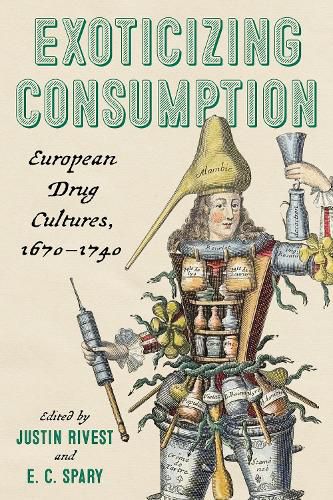Readings Newsletter
Become a Readings Member to make your shopping experience even easier.
Sign in or sign up for free!
You’re not far away from qualifying for FREE standard shipping within Australia
You’ve qualified for FREE standard shipping within Australia
The cart is loading…






Exotic drugs and spices, from tea to opium, were among the first fruits of European commercial expansion in the sixteenth century. By the eighteenth, many had become profitable products of the European empires that had spread across the globe. Often, they were objects of appropriation-substances whose curative virtues were known to Indigenous peoples and assimilated into European knowledge and commerce by missionaries, soldiers, and merchants. Exoticizing Consumption explores the many ways in which new global drugs disrupted the European medical marketplace, how they came to be known, described, valued, and used in Europe, how they reached European markets, who sold them, and who consumed them. Individual chapters covering many parts of Europe, from Spain in the south to Russia in the north, address the effects of commercial expansion when no central, national, or international system for policing drugs existed. Collectively, they trace the movement of drugs from their sources of extraction all over the world in light of intertwined processes of knowing, healing, using, and selling in the global marketplace and beyond.
$9.00 standard shipping within Australia
FREE standard shipping within Australia for orders over $100.00
Express & International shipping calculated at checkout
Exotic drugs and spices, from tea to opium, were among the first fruits of European commercial expansion in the sixteenth century. By the eighteenth, many had become profitable products of the European empires that had spread across the globe. Often, they were objects of appropriation-substances whose curative virtues were known to Indigenous peoples and assimilated into European knowledge and commerce by missionaries, soldiers, and merchants. Exoticizing Consumption explores the many ways in which new global drugs disrupted the European medical marketplace, how they came to be known, described, valued, and used in Europe, how they reached European markets, who sold them, and who consumed them. Individual chapters covering many parts of Europe, from Spain in the south to Russia in the north, address the effects of commercial expansion when no central, national, or international system for policing drugs existed. Collectively, they trace the movement of drugs from their sources of extraction all over the world in light of intertwined processes of knowing, healing, using, and selling in the global marketplace and beyond.